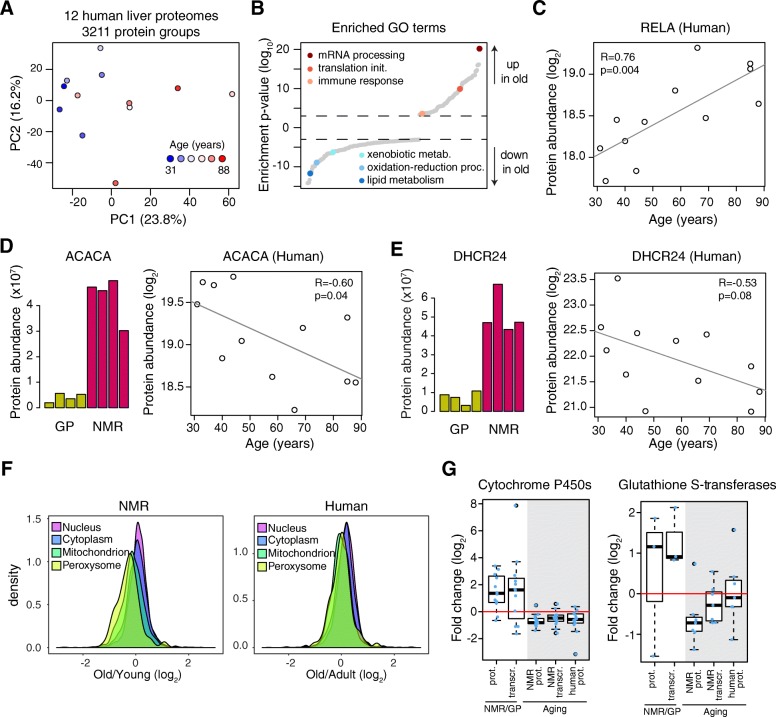Fig. 4.
The impact of aging on the human liver proteome and comparison to NMR aging. a Principal component analysis (PCA) of the human proteome profiles based on 3211 protein groups quantified. b Gene Ontology (GO) enrichment analysis based on differential protein expression between adult (< 47 years old, n = 6) and old (> 66 years old, n = 5) donors. One donor aged 58 years old was excluded from differential expression analysis. GO categories are plotted according to the log10 value of the calculated enrichment p value. Positive and negative values are used for gene sets showing higher and lower abundance in old individuals, respectively. Selected significantly affected GO terms (q < 0.05) are highlighted. The complete list of enriched GO terms is available in Additional file 9: Table S7. c The inflammation marker RELA shows a steady increase of abundance with age. d, e Selected examples of enzymes involved in lipid metabolism being upregulated in NMR vs. GP and decreasing during aging both in NMRs and humans. f Mitochondrial and peroxisomal proteins decrease with age in both the NMR and human liver. Distributions of fold changes were calculated separately for proteins assigned to different cellular compartments. Mitochondrial (n = 953, p = 1.2 × 10−37 Welch two sample t test for NMR; n = 716, p = 1.4 × 10−21 Welch two sample t test for human) and peroxisomal proteins (n = 95, p = 4.9 × 10−6 Welch two sample t test for NMR; n = 74, p = 8.9 × 10−3 Welch two sample t test for human) showed a significant lower abundance in old samples as compared to the rest of the quantified proteins. g Major categories of detoxifying enzymes differentially expressed in NMR vs. GP and affected by aging in both NMR and humans (only significantly affected cases are shown for each group; cutoffs: NMR vs. GP and NMR aging, combined q < 0.05; human proteome aging q < 0.1). Related to Additional file 9: Table S7 and Additional file 10: Figure S3

